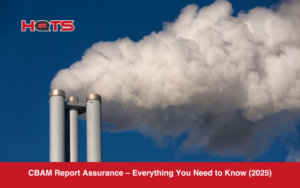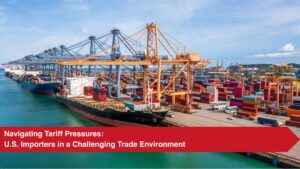With the region’s rapid economic growth, urbanization, and increasing energy demands, Southeast Asian countries have invested heavily to build their energy industry to supply not only domestic demands but also international markets. The diverse energy landscape in Southeast Asia, encompassing both traditional and renewable sources, presents requirements for quality assessment. This article will introduce some common criteria normally applied in quality inspection for the energy industry in Southeast Asia.
Why has Southeast Asia become promising for energy manufacturing?
Several key factors contribute to the energy industry’s competitive edge in Southeast Asia:
- Renewable Resources: Southeast Asia benefits from abundant renewable resources, including solar energy due to its tropical climate and hydroelectric potential stemming from numerous rivers and water bodies across the region. These resources offer a sustainable and diverse energy mix.
- Geographical Diversity: The region’s geographical diversity allows for a variety of energy sources, from hydropower in mountainous areas to geothermal energy in volcanic zones. This diversity ensures a resilient and adaptable energy infrastructure.
- Investment Opportunities: Rapid economic growth and urbanization in Southeast Asia create attractive investment prospects for energy projects.
- Technological Innovation: With a growing emphasis on sustainability, the energy sector in Southeast Asia is embracing innovative technologies like smart grids, energy storage solutions, and decentralized power systems. This drives efficiency and enhances energy security.
- Strategic Positioning: The region’s strategic positioning along major trade routes facilitates the import of energy resources and technology. This can lead to energy security through diversified supply chains and partnerships.
- Economic Development: Developing the energy sector stimulates economic growth by creating jobs, fostering local industries, and supporting related sectors. This interconnection contributes to the overall development of the region.
- Regional Cooperation: Initiatives such as the Association of Southeast Asian Nations (ASEAN) promote regional cooperation in energy policies, trade, and infrastructure development. This collaboration facilitates knowledge sharing and joint projects.
- Environmental Concerns: As awareness of environmental issues grows, governments and businesses in Southeast Asia are incentivized to invest in clean energy technologies, positioning the region as a frontrunner in sustainable energy transitions.
- Community Engagement: Involvement of local communities in energy projects fosters social acceptance and support. This collaborative approach can ease project implementation and enhance the industry’s reputation.
What is the common checklist of quality inspection for energy industry?
Quality assessment in the energy sector involves the methodical evaluation and confirmation of the excellence, security, and adherence of diverse commodities, gear, components, and methodologies linked to energy production, distribution, and usage. The energy domain encompasses a wide array of sectors, spanning fossil fuels, renewable energy, power generation, transmission, and more. The evaluation of quality plays a pivotal role in guaranteeing that all facets of these sectors fulfill the necessary standards, regulations, and stipulations. Here are some key facets of quality assessment in the energy field:
- Production and Manufacturing Procedures: Quality assessment entails the observation and analysis of the production procedures of components and equipment utilized in energy production. This encompasses the evaluation of material quality, precision in production, conformance to specifications, and adherence to industry benchmarks.
- Safety Criteria: Safety stands as the utmost priority in the energy sector. Quality assessment verifies that equipment and systems meet safety benchmarks to prevent accidents, incidents, and ecological harm. This includes evaluating factors such as structural integrity, electrical safety, and fire prevention strategies.
- Effectiveness and Efficiency: Quality assessment gauges the efficiency and effectiveness of energy equipment and systems. For instance, in renewable energy systems like solar panels and wind turbines, evaluators assure that these systems yield the anticipated energy output and fulfill efficiency targets.
- Adherence to Regulations: The energy sector is subject to myriad regulations and norms imposed by governmental agencies and international organizations. Quality assessment guarantees that all activities, equipment, and procedures conform to these regulations, encompassing aspects such as emissions, environmental impact, and operational methodologies.
- Testing and Accreditation: Assessment frequently entails rigorous testing of equipment and components to verify their quality and effectiveness. If a product meets the stipulated criteria, it secures certification, which can be pivotal for fostering client confidence and satisfying industry requisites.
- Preventive Maintenance: Scheduled quality assessments are carried out as part of proactive maintenance schemes to pinpoint and address possible issues prior to their escalation into expensive breakdowns. This is especially vital for sustaining the dependability of power generation and distribution systems.
- Supply Chain Oversight: Quality assessment extends to the entire supply chain, encompassing providers of materials, components, and subsystems. Ensuring quality at each stage of the supply chain contributes to the overall dependability and operation of energy systems.
- Environmental Aspects: Quality assessment can also encompass ecological considerations, such as gauging equipment’s influence on air and water quality, noise levels, and emissions. This is particularly pertinent in sectors like fossil fuel extraction and combustion.
- Documentation and Reporting: Comprehensive documentation and reporting constitute integral components of quality assessment. Assessors chronicle their discoveries, actions taken, and any deviations from benchmarks. This documentation serves as proof of conformity and can be harnessed for audits and regulatory intentions.
- Constant Enhancement: Quality assessment supports continuous enhancement endeavors within the energy sector. By identifying zones for refinement, firms can hone their methodologies, heighten efficiency, diminish waste, and augment overall performance.
If you are looking for suppliers in the energy industry in Southeast Asia and would like to ensure that the quality would be as you expected, please contact us now. With more than 25 years of experience and local expertise, HQTS will help to validate your suppliers and control the quality of your supply chain.
Click here for the brochure of HQTS about Renewable Energy Sector.




